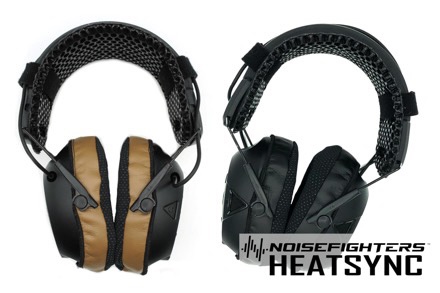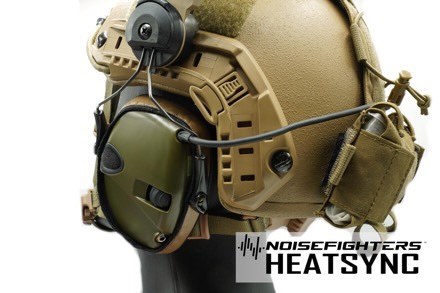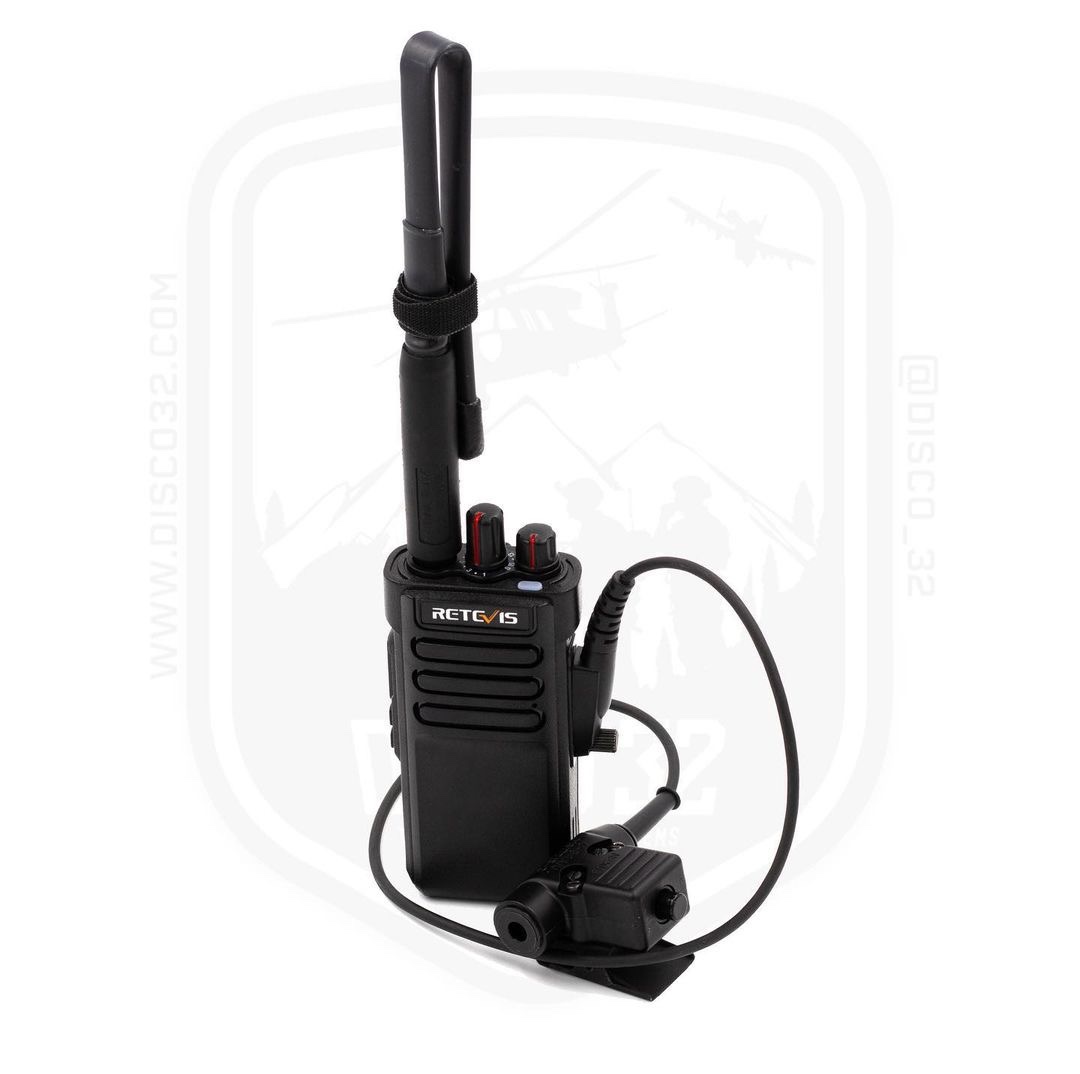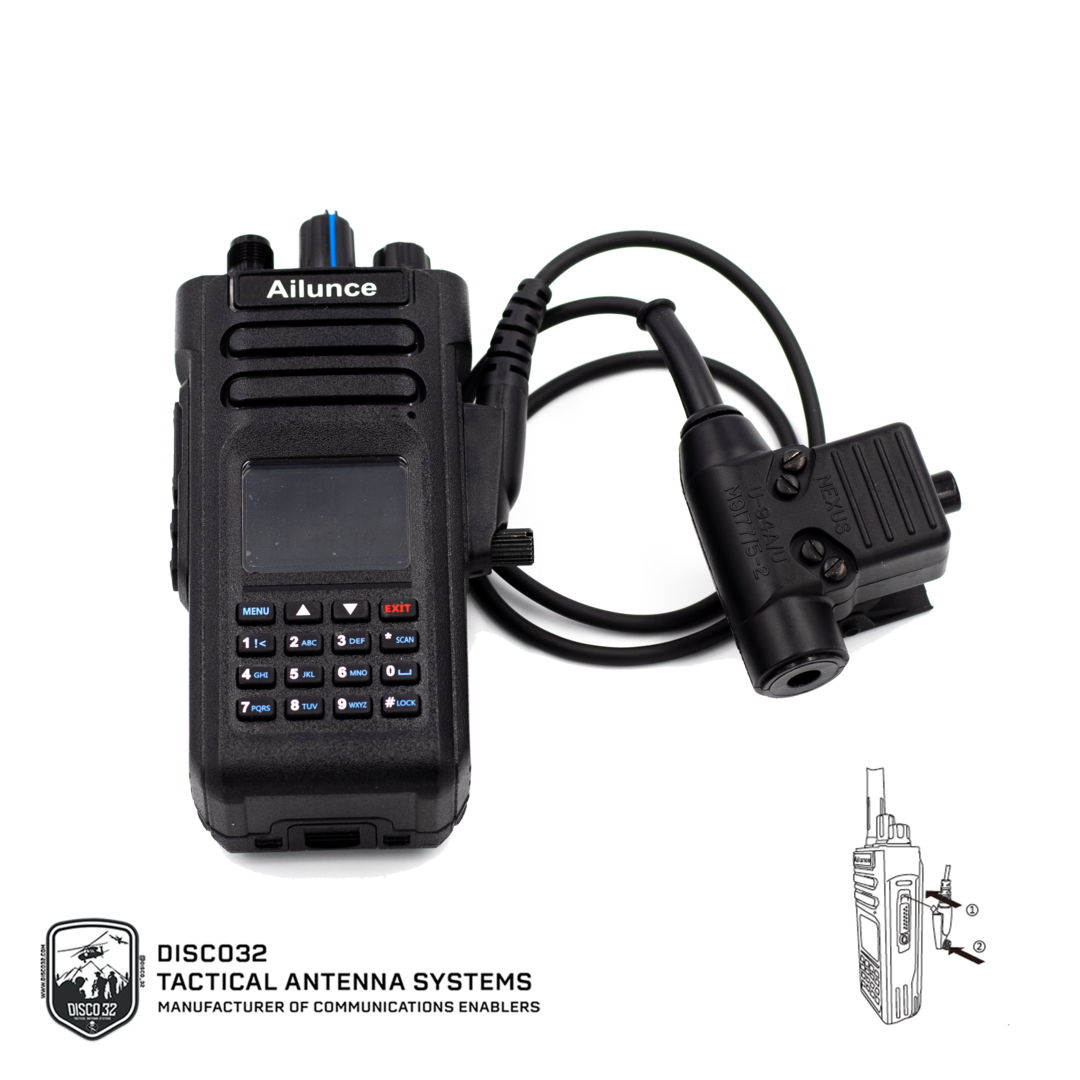GRAND RAPIDS, MICHIGAN (19 APRIL, 2021)

NOISEFIGHTERS and its development partner 4D TACTICAL today announces the public launch of the HEATSYNCTM sweat-wicking, form-fitting fabric ear pad cover for headsets. Heatsync addresses the #1 problem with over-the-ear headsets: in hot weather, there is internal sweat accumulation and excessive heat buildup. A form-fitting cover — made 100% in the U.S.A. from advanced materials including 4D Tactical’s NanoTech silver-embedded, antimicrobial, wicking fabric — is pulled tight over the headset’s existing ear pads. In use, the Heatsync draws perspiration out from the inside of the headset and helps cool the wearer through the evaporative process, while also eliminating the slimy feeling normally associated with pressing wet rubber ear pads against the head in hot weather.
“Teaching over 70 classes a year, I practically live in hearing protection. The comfort and protection Noisefighters products offer is second to none, and the new Heatsync has only made it better. Goodbye, sweaty earpro!” said Erik “Trek” Utrecht, owner of Michigan Defensive Firearms Institute (MDFI: https://trainmdfi.com). MDFI is a Michigan-based training company that trains over 1500 students annually with the goal of building responsibly-armed citizens that are confident and competent with their defensive tools.

Photo showing the Noisefighters Heatsync in coyote brown and black colors installed on headsets, with Qore Performance IceVents Ventilated Headbands additionally installed.
“After more than two years of development, I’m extremely excited to get Heatsync out into the world. Being able to partner with 4D Tactical on this product is a dream come true, as their leadership team brings decades of experience to the table and a standing in the industry that’s really unmatched,” said Neal Brace, inventor of the product and owner of Noisefighters. “Heatsync is, to my knowledge, the first viable answer to the problem that my customers have brought up time and time again: in hot weather, how does one stay cool, or at least comfortable, while wearing a headset that is designed to seal the noise out? The solution we came up with is tightly form fitting, keeps the ear cup cavity fully open for comfort, and ensures the noise seal is totally closed for safety. It doesn’t rely on electronics, just specially-engineered fabrics and a clever design.”
4D Tactical’s leadership team, including CEO Heidi Dennis and Vice President David Dennis, said in a statement that they were, “[…] very pleased to have had the opportunity to collaborate with Noisefighters. We feel the Heatsync product provides significant improvements to conventional headset ear seals. We hope this is just the beginning of our collaboration with Noisefighters.”

Photo showing the Noisefighters Heatsync in coyote brown installed on a headset and attached to a helmet.
Heatsync is a universal cover designed to fit every headset that uses the industry standard 4″ (102 mm) tall by 3″ (76 mm) wide oval or rectangular ear pads of thicknesses between 0.5″ (12.7mm) and 0.75″ (19mm). A stainless steel expanding spring is included to lock the Heatsync cover to the inside of each cup on the headset and keep the ear cup cavity open. The cover was tested and proven to fit all current headsets from Ops-Core®, Peltor®, Howard Leight®, Sordin®, Walker’s Game Ear®, and many brands of aviation headsets, as well. It may fit other headsets with slightly smaller, larger, or even fully circular ear pads with different thicknesses, as well, due to the stretchable fabric construction. Installation is very fast, easy, and reversible, with no evidence of the cover ever having been attached.

Photo showing the form-fitting nature of the Noisefighters Heatsync sweat-wicking fabric cover, shown in both coyote brown and black colors.
During extreme cold weather use, the cover additionally provides an insulative barrier between the freezing cold rubber ear pads and the user’s face. The Heatsync’s proprietary fabrics are also pleasing to the touch and add a noticeable amount of comfort versus rubber ear pads. The design is fully compatible with either foam-filled or gel-filled ear pads, and its highly-compliant fabric is a perfect fit with Noisefighters’ Sightlines gel-filled ear pads that feature a patented relief cut feature for glasses arms to pass through.

Photo showing both colors of the Noisefighters Heatsync with product packaging.
Heatsync is made in the U.S.A. and is fully Berry Amendment and TAA compliant.
Heatsync’s MSRP is $90, with product launch sale pricing set at $75. Noisefighters offers a discount program for LEO / MIL and veterans / EMS / FD / security professionals / defensive tactics instructors, with details available on its website on the FAQ page. Organizations looking to purchase in bulk can inquire about a volume discount.
Noisefighters has the Heatsync available for sale on its website and will soon make it available through its extensive, worldwide dealer network.
CONTACT:
Noisefighters
www.noisefighters.com team@noisefighters.com
616-226-3551
Instagram: @noisefighters

































































































































